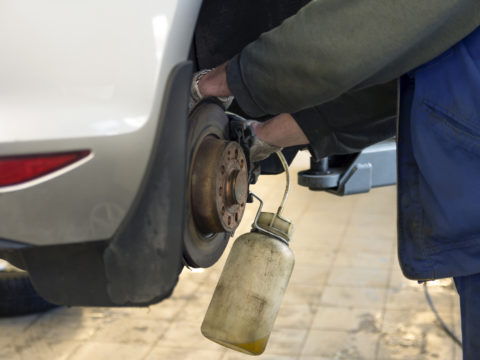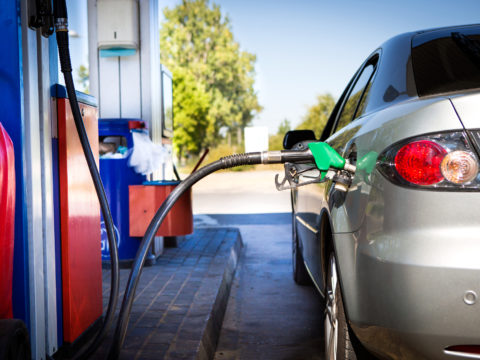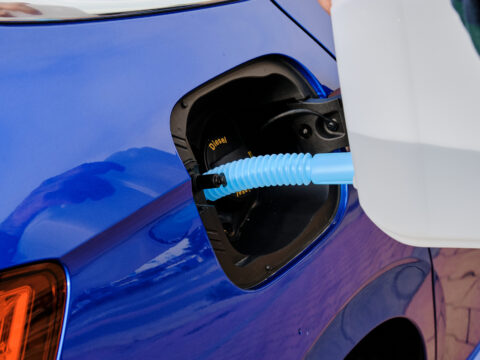Can you just put water in the windshield wiper fluid reservoir? While it usually depends, the general answer is no. You should not put water in your windshield wiper fluid.
However, depending on your particular circumstances, there might be times when it is acceptable to mix water with your windshield wiper fluid.
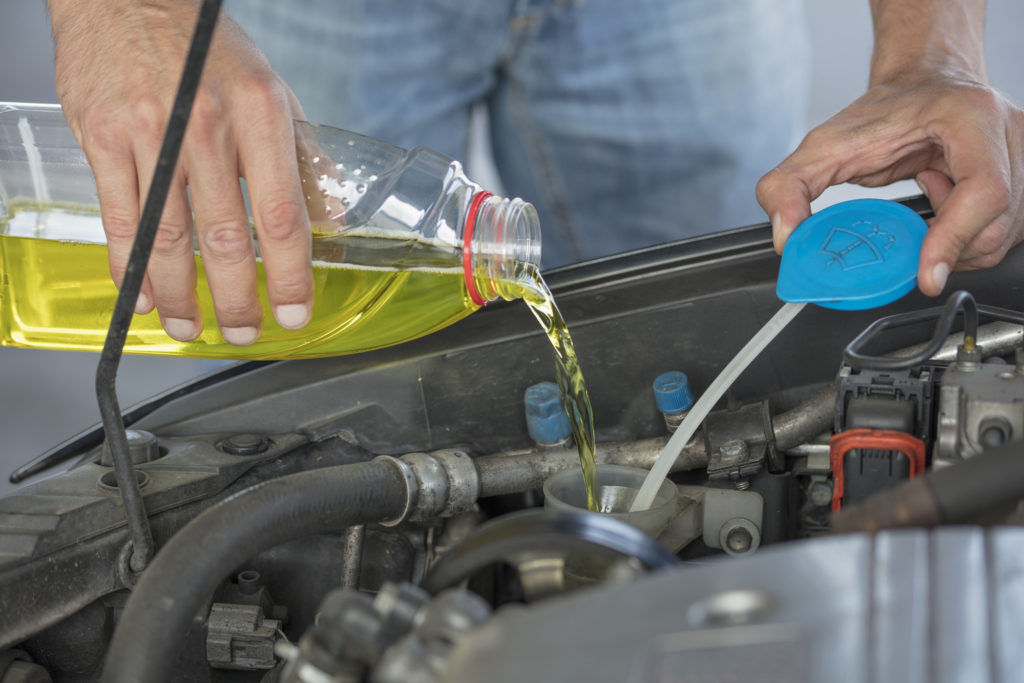
Contents
What Is Windshield Wiper Fluid Made of?
Windshield wiper fluid combines water and other chemicals such as alcohols and surfactants. The chemicals help keep the fluid from freezing in cold weather and allow it to break down debris and grime on your windshield.
If you live in a place with many bugs, you might find windshield wiper fluid designed to get rid of bugs on your windshield quickly.
Can You Put Normal Water in Windshield Wiper Fluid?
Water can freeze in the reservoir, and you’ll be stuck with a big chunk of ice instead of fluid when you need it most. Water also doesn’t work as well as windshield wiper fluid at getting rid of debris and grime on your windshield.
Even though you should probably not put water in your windshield wiper fluid, you can if you’re in a pinch. That’s because most windshield wiper fluid is around 90% water. So if you’re in a bind, you can top off your reservoir with regular old H2O from the tap.
Just be aware that if the temperature outside is below freezing, that water will freeze, and you will have a big mess on your hands. That’s because the water inside your reservoir and the windshield wiper lines will freeze. When water freezes, it expands, which in this case could cause your windshield wiper lines to burst.
Not only will this damage to your windshield wiper system be expensive to repair, but you’ll also be left without any windshield wiper fluid at all in the meantime, which could be a disaster if you need it during bad weather.
So, if you can, try to find genuine windshield wiper fluid to put in your car. You’ll be glad you did while driving in a winter storm, and your wipers are working like a charm.
Can You Fill Wiper Fluid With Water?
If you want to mix your windshield wiper fluid, you can use the wiper fluid as the base. Then, add some water to the base to help keep it from freezing. You can also add alcohol to the mixture to help it break down debris and grime on your windshield.
Can You Use Distilled Water Windshield Washer Fluid?
If you’re looking for a way to prevent your windshield wiper fluid from potentially freezing, you should probably stay away from using distilled water. That’s because distilled water freezes faster than regular tap water. So if you live where it gets cold, adding some distilled water to your windshield wiper fluid will be the wrong thing to do.
If the only type of water you have is distilled water, you can still use it as windshield wiper fluid. However, remember that distilled water doesn’t have any chemicals that help break down debris and grime on your windshield, so don’t use it alone.
What Is Washer Fluid Made Of?
Most washer fluids consist of similar ingredients. These ingredients help to keep the fluid from freezing, and they also help to break down debris and grime on your windshield to help with better visibility when you need it.
Windshield Washer Fluid Ingredients
Here is a list of some of the most common ingredients:
- Water (could be distilled or deionized)
- Alcohols (usually ethylene glycol, but it could also be isopropanol)
- Surfactants
- Dyes
- Fragrances
Some washer fluids contain ingredients that help remove bugs and tar from your windshield. This fluid has a higher percentage of alcohol and other chemicals, making it more effective at getting rid of the bugs.
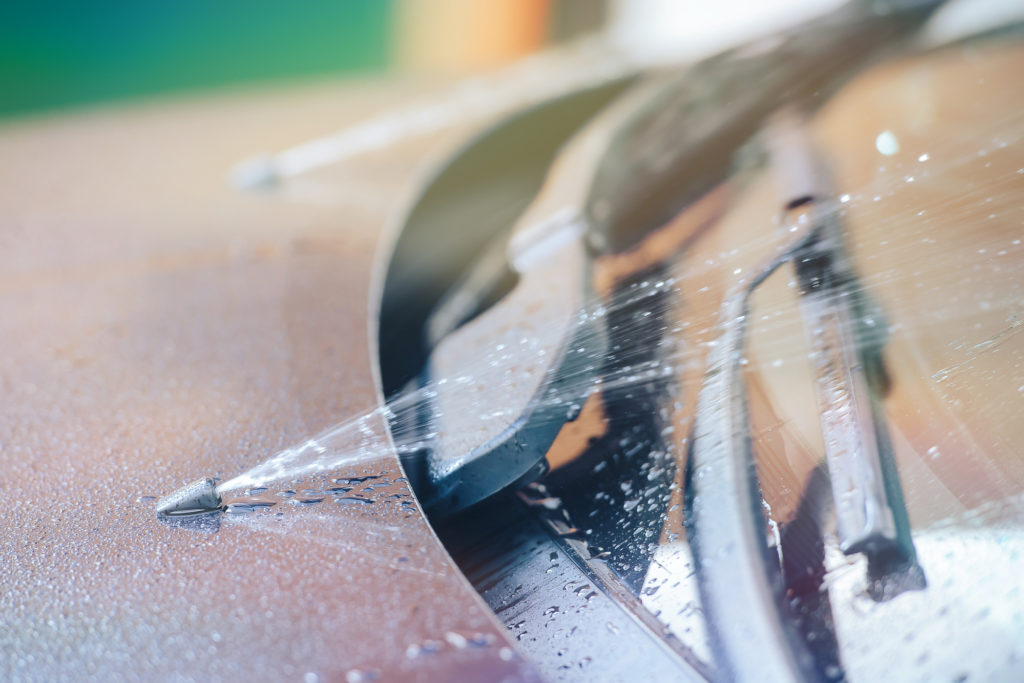
How To Refill Water for Windshield Wiper Fluid?
Filling your windshield wiper fluid reservoir is easy. Just open the hood of your car and locate the windshield wiper fluid reservoir. It will usually be on the engine compartment’s far left or far right. The reservoir is usually a plastic container with a cap that says “windshield wiper fluid.” If you look at the reservoir, you’ll notice a line that indicates how full it should be.
Just pour the fluid into the reservoir until it reaches the line. Once it’s full, put the cap back on, and you’re good to go. If the reservoir is empty, you’ll want to fill it with windshield wiper fluid all the way to the line.
However, if the reservoir is only partially empty, you can top it off with water as long as you won’t face freezing temperatures soon.
Windshield Washer Fluid Price
Windshield wiper fluid is relatively inexpensive. You can usually find it for around $5 a gallon. However, it depends on the type of product you’re looking for. There are some products that specialize in repelling water and giving your windshield a shiny clean. In contrast, other products may simply offer a superficial clean.
For example, if you live where you are affected by bugs, you might want to buy a washer fluid designed to remove and repel bugs. This type of fluid is usually a little more expensive, but it’s worth it if you don’t want to deal with many bugs on your windshield.
Where To Buy Windshield Wiper Fluid
You can find windshield wiper fluid at most auto parts stores and gas stations. You can also buy it online. However, ensure you buy from a reputable source to know you’re getting a quality product. You don’t want to end up with a cheap knock-off that doesn’t work as well as the real thing.
If you go to a big box store to buy your wiper fluid, you can usually find it in the automotive section. This section is generally near the back of the store, close to other automotive items such as car waxes and cleaners.


